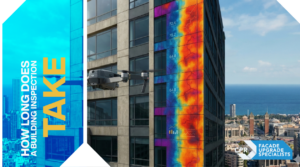Building and construction repair services ensure the safety and longevity of properties by addressing structural issues and preventing further damage. These services offer expert assessments, tailored repairs, and emergency solutions to protect property investments and maintain structural integrity.
Maintaining the structural integrity of a facade building is crucial for safety, aesthetics, and cost management. Proactive structural repairs address minor issues before they escalate into significant problems, thereby preventing costly future damages. In this article, we will consider the importance of those repairs, typical issues with facades, the benefits of early detection, steps to implement a maintenance plan, and how regular inspections can improve safety and save money.
Importance of Proactive Structural Repairs for Facade Buildings
Proactive structural repairs aid in ensuring both the integrity and appearance of façade buildings. These repairs are carried out on time before the problems become serious, avoiding future costly repairs and providing for an extended life for a building. Timely structural repairs help maintain both the stability and visual appeal of façade buildings. By addressing issues early, these repairs prevent minor problems from escalating into major, expensive fixes, ultimately prolonging the building’s lifespan and reducing long-term maintenance costs.
- Aesthetic Value Preservation
Proper façade maintenance allows the building to remain visually appealing, which is important to drawing in tenants and clients. A well-maintained façade places a good impression on the building’s appearance and promotes its marketability. If these structural repairs are not done, their wear will be apparent, which diminishes the appeal of a building.
- Improved Safety
Attention to structural issues early on serves to ensure the safety of building occupants and pedestrians. Unsecured or broken facade elements can become a massive threat and may lead to an accident. If building repairs are made before these hazards develop, building owners can minimize this risk and ensure the structure remains secure and safe for all people.
- Saves money
This is less expensive in most cases, compared to major renovations or emergency fixes. Early detection and repair of small issues avoids the development of more significant problems, which are often costlier. Regular maintenance will help manage the cost of building repairs effectively and provide long-term financial benefits to the building owners.
- Compliance with Regulations
It will also help in complying with the local building codes and safety regulations. Compliance is necessary not only to avoid litigation but also to avoid fines imposed by the authorities. Proactive building repairs will prove that the building is maintained according to the standards laid down in the regulations, thus improving the value and reputation of the building.
- Common Issues in Facade Structures
Facade structures are constantly under the action of different environmental and man-made factors. These can cause great damage if not timely attended to. Their timely attention is of prime importance to the maintenance of the structural integrity and aesthetic value of the building. Some of the most common problems associated with facade structures are discussed as follows:
- Erosion and Disintegration
Such continuous exposure to weather, such as rain, snow, and extreme temperatures, is one of the most frequent causes of problems like erosion and disintegration of façade materials. The façade materials, such as concrete, brick, and stone, are worn down by elements over time, which results in surface degradation. Regular cleaning and the application of protective coatings can help mitigate these effects and prolong the lifespan of the facade.
- Cracking and Bulging
Cracking and bulging often occur as signs of underlying problems caused by building movement, thermal expansion, or poor construction practices. Cracks affect the integrity of the facade; there will be water infiltration, which further has detrimental effects. Bulging indicates that parts of a facade are detaching from the structure, which generally poses safety risks. Immediate repair involves sealing cracks and reinforcing the facade to prevent further movement.
- Water Infiltration
Infiltration of water is a serious issue that may result in serious structural destruction and health hazards like mould. This generally happens because of poor sealant application, roofing damage, or a faulty building drainage system. Water entering through the building structure causes weakness in the structural elements through methods such as wood rot, corrosion of metals, and interior damage. Addressing water infiltration involves repairing leaks, replacing damaged sealants, and ensuring proper water drainage away from the building.
- Corrosion
This can lead to its structure becoming severely weakened, including metal components of the building such as anchors, fasteners, and reinforcement bars within the façade. Moisture and other foreign matter seep inside the joints between adjacent unitized panels or metal members, which accelerates corrosion of the metal components involved and thereby accelerates rusting and deterioration. Regular inspection and maintenance, including the application of anti-corrosive treatments and replacement of affected components.
The Long-Term Benefits of Early Detection and Repair
Early identification and timely repairs of structural problems in façade buildings have many long-term benefits. This will prevent minor issues from becoming major problems, resulting in severe damage and greater hazard/cost. Some of the key advantages of proactive maintenance are discussed below.
- Preventing Major Failures
Early detection and repair of structural problems avert major failures that may result in extensive damage and require costly repairs. This can be ensured through regular building repairs, wherein minor problems, such as cracks or water infiltration, are immediately addressed before they can lead to serious structural compromise. This proactive approach reduces the possibility of catastrophic failures and, hence, secures both the building and those occupying it.
- An Aspect of Durable Building Materials
Proactive structural repairs also extend the life expectancy of primary building materials by ensuring that small damages do not snowball into large-scale deterioration. The frequent sealing of all openings, together with repairing penetration points for water infiltration, provides doubled protection to materials like concrete, brick, and metal against strong wear and thus helps maintain a structure’s integrity in the long term, despite its aesthetic value.
- Increased Property Value
Well-maintained buildings have a higher property value, not only in terms of aesthetic appeal and vertical endurance but also structurally. Facade building repairs improve the outlook of the property and provide comfort for purchase by alluring customers with its durability and safety. This results in better marketability and higher returns on investment for property owners.
- Operational Efficiency
Regular building repairs and maintenance ensure operational efficiency as they reduce emergency repair needs. It runs more effectively with fewer breakdowns, thus ensuring a safe environment and comfort for the users inside the well-maintained building. Proactive maintenance minimizes downtime and reduces major repair project costs related to it.
- Energy Efficiency
It can help improve the energy performance of a building through structural faults that are pointed out for prompt dealing with these issues. Properly maintained facades offer better insulation, therefore minimizing energy loss and lowering utility bills. Such facade building repairs as sealing gaps and cracks prevent air leakage, thus maintaining an even temperature indoors and reducing the amount of energy consumed by the building.
Conclusion
In terms of avoiding future damages, facade building repairs are generally required on a proactive structural basis. If minor issues are addressed in time, they can help the building owner avoid major disasters, extend the life expectancy of materials, improve property value, and enhance operational and energy efficiency. A proactive maintenance plan means an investment in protecting a building and its occupants, which goes into the long term. It makes proactive repair one of the most integral strategies for the long-term sustainability of buildings and leaves property owners at complete peace.
FAQS
What are some of the common issues with façade structures that require immediate attention?
The common issues with façade structures are weather erosion and disintegrations, cracking and bulging from structural movement, infiltration of water leading to mold and decay, corrosion of metal components, and improper past repairs that are causing damage. Quick attention to these problems averts further deterioration and ensures the building’s structural integrity and safety.
How do proactive structural repairs prevent major failures?
Proactive structural repairs address minor problems, like cracks or water infiltration, before they turn into major failures. Early detection and repair will help to protect building owners from significant structural damage and costly emergency repair works, hence providing the building with safety measures. This helps in maintaining the stability and longevity of the building.
What long-term advantages do early detection and repair provide?
It allows one to detect and repair structural defects earlier on, which will prevent major failures and extend the life of building materials, thus increasing property value and operational efficiency, and enhancing energy efficiency. All these benefits will result in cost savings, better safety, and a more appealing and durable building.
How do regular inspections enhance safety and save money?
Accordion ConteRegular inspections offer excellent potential for spotting any possible structural deficiencies before they mature into serious problems, thereby enabling on-time repairs. This proactive approach improves safety by avoiding potential accidents due to facade failures and saves money by avoiding expensive emergency repairs and far-reaching damage. Regular maintenance ensures compliance with safety regulations and extends the building’s lifespan.
What are some of the steps for putting a proactive structure maintenance plan into action?
This kind of proactive structural maintenance plan incorporates frequent inspections and detailed assessment of recommendations identified, prompt repairs, record-keeping for all maintenance activities undertaken, and the involvement of competent professionals. All possible troubles in a program like this are identified and resolved effectively at once, not allowing further damage and hence ensuring the basic structure of the building does not lose its integrity.






